Kemesta
Toimialayhteisö:
Kemesta
Komitea: ISO/TC 35/SC 16
(Chemical analysis)
Alkuperä: ISO
Määräpäivä: 2025-08-19
This document specifies the testing method for evaluating the formaldehyde purification performance of interior wall coatings using the bag method, which mainly includes principles, apparatus, reagents and materials, experimental system validation, formaldehyde concentration analysis, sampling, standard test conditions, test procedures, precision, and test reports. This document is applicable to the measurement and evaluation of formaldehyde purification performance of various types of interior wall coatings. Other indoor decoration materials with formaldehyde purification performance, such as wallpaper, carpets, decorative panels, etc., can also refer to this document. Acetaldehyde, propionaldehyde, butyraldehyde, valeraldehyde, isovaleraldehyde, capronaldehyde, benzaldehyde, 2,5-dimethylbenzaldehyde, o-tolualdehyde, m-tolualdehyde, p-tolualdehyde and other carbonyl compounds can also refer to this document.
Toimialayhteisö:
Kemesta
Komitea: CEN/TC 335
(Solid Biofuels and Pyrogenic Biocarbon)
Alkuperä: CEN
Määräpäivä: 2025-08-21
ISO 16994:2016 describes methods for the determination of the total sulfur and total chlorine content in solid biofuels. It specifies two methods for decomposition of the fuel and different analytical techniques for the quantification of the elements in the decomposition solutions. The use of automatic equipment is also included in ISO 16994:2016, provided that a validation is carried out as specified and that the performance characteristics are similar to those of the method described in ISO 16994:2016.
Toimialayhteisö:
Kemesta
Komitea: ISO/TC 238
(Solid Biofuels and Pyrogenic Biocarbon)
Alkuperä: ISO
Määräpäivä: 2025-08-21
This International Standard describes methods for the determination of sulfur and chlorine content in solid biofuels and pyrogenic biocarbon and specifies two methods for decomposition of the fuel and different analytical techniques for the quantification of the elements in the decomposition solutions. The determination of other elements such as fluorine and bromine is also possible with the methods in this document, however performance data for these elements are not provided. The use of automatic equipment is also included in this International Standard, provided that a validation is carried out as specified and that the performance characteristics are similar to those of the method described in this International Standard.
Toimialayhteisö:
Kemesta
Komitea: CEN/TC 454
(Algae and algae products)
Alkuperä: CEN
Määräpäivä: 2025-08-21
This document specifies a method for the quantitative determination of total
uronic acids by High-Performance Anion Exchange Chromatography coupled with
Pulsed Amperometric Detection (HPAEC-PAD) after acid hydrolysis of the
samples. It provides a single analysis method for determining mannuronic,
glucuronic, and guluronic acids in brown seaweed and alginate products.
Toimialayhteisö:
Kemesta
Komitea: CEN/TC 454
(Algae and algae products)
Alkuperä: CEN
Määräpäivä: 2025-08-21
This document specifies a laboratory method for the quantification of phycocyanin content in the genus Arthrospira (Spirulina) by a
spectrophotometric method.
Toimialayhteisö:
Kemesta
Komitea: CEN/TC 454
(Algae and algae products)
Alkuperä: CEN
Määräpäivä: 2025-08-21
This European standard specifies a laboratory method for the determination of the
carotenoid content in microalgae. The method is based on the development of the
chlorophyll a standard, which resulted in prEN 18034. This method has been validated
for the microalgae species Nannochloropsis and Phaodactlylum. This standard is only
validated for fucoxanthin, beta carotene and lutein content, but could be used for other
carotenoids as well. Given small adaptations to be able to measure smaller
concentrations, this method could also be used for macro algae.
This standard is developed in CEN/TC 454/WG 6 Product test methods.
This document specifies a procedure to qualify a preliminary welding procedure specification (pWPS) by welding procedure tests to produce a qualified welding procedure specification (WPS).
This document applies to the following thermoplastic welding processes: hot gas welding: round nozzle, speed, wedge; extrusion welding; heated tool welding: butt, socket, wedge. The document applies to the welding of the following products: sheet, pipe (unreinforced, solid wall only); fittings (unreinforced only); lining membrane.
This document covers the welding of the following groups of materials:
a) for sheets, pipes and fittings: PVC (including all kinds of PVC-U, PVC-C) and ABS; PP; PE; PVDF; ECTFE, PFA and FEP;
b) for lining membranes: PVC-P; PE; ECB;PP;
c) for pipes and fittings only: PA-U 11 and PA-U 12
Toimialayhteisö:
Kemesta
Komitea: ISO/TC 35
(Paints and varnishes)
Alkuperä: ISO
Määräpäivä: 2025-09-05
This document specifies a method for determining the softening point of resins (including rosin) and can, under user-defined conditions, give results comparable to those obtained by ISO 4625-1 and ISO 4625-2.
Tämä asiakirja käsittelee lääketieteelliseen ja teolliseen käyttöön tarkoitettujen täyttöpaineeltaan alle 300 bar kaasupullojen venttiilien ulostuloliitäntöjä ja täyttöyhteitä. Taulukossa 1 esitetään kaasut, joille venttiilit soveltuvat. Tämä asiakirja sisältää vain ulostuloliitäntöjen ja niihin liittyvien täyttöyhteiden mitoituksen.
Tämä asiakirja ei koske nestekaasua, myrkyllisiä, syövyttäviä tai kylmäainekaasuja.
